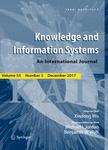版权所有:内蒙古大学图书馆 技术提供:维普资讯• 智图
内蒙古自治区呼和浩特市赛罕区大学西街235号 邮编: 010021

作者机构:West Virginia Univ Dept Comp Sci & Elect Engn Morgantown WV 26506 USA
出 版 物:《KNOWLEDGE AND INFORMATION SYSTEMS》 (知识和信息系统季刊)
年 卷 期:2018年第54卷第2期
页 面:265-285页
核心收录:
学科分类:0711[理学-系统科学] 07[理学] 08[工学] 070105[理学-运筹学与控制论] 081101[工学-控制理论与控制工程] 0701[理学-数学] 071101[理学-系统理论] 0811[工学-控制科学与工程] 0812[工学-计算机科学与技术(可授工学、理学学位)]
基 金:US National Science Foundation [CNS-1618629] Direct For Computer & Info Scie & Enginr Funding Source: National Science Foundation Division Of Computer and Network Systems Funding Source: National Science Foundation
主 题:Malware detection Heterogeneous deep learning framework AutoEncoder Restricted Boltzmann machines Associative memory
摘 要:With computers and the Internet being essential in everyday life, malware poses serious and evolving threats to their security, making the detection of malware of utmost concern. Accordingly, there have been many researches on intelligent malware detection by applying data mining and machine learning techniques. Though great results have been achieved with these methods, most of them are built on shallow learning architectures. Due to its superior ability in feature learning through multilayer deep architecture, deep learning is starting to be leveraged in industrial and academic research for different applications. In this paper, based on the Windows application programming interface calls extracted from the portable executable files, we study how a deep learning architecture can be designed for intelligent malware detection. We propose a heterogeneous deep learning framework composed of an AutoEncoder stacked up with multilayer restricted Boltzmann machines and a layer of associative memory to detect newly unknown malware. The proposed deep learning model performs as a greedy layer-wise training operation for unsupervised feature learning, followed by supervised parameter fine-tuning. Different from the existing works which only made use of the files with class labels (either malicious or benign) during the training phase, we utilize both labeled and unlabeled file samples to pre-train multiple layers in the heterogeneous deep learning framework from bottom to up for feature learning. A comprehensive experimental study on a real and large file collection from Comodo Cloud Security Center is performed to compare various malware detection approaches. Promising experimental results demonstrate that our proposed deep learning framework can further improve the overall performance in malware detection compared with traditional shallow learning methods, deep learning methods with homogeneous framework, and other existing anti-malware scanners. The proposed heterogeneous